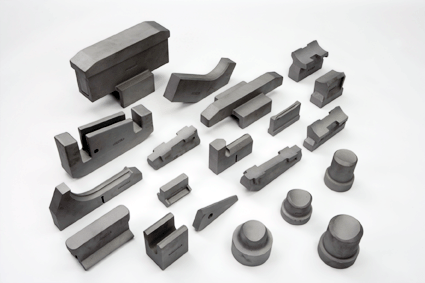Home / All / Gas Turbine Wheel Parts /
Custom Turbine Compressor Rotor Blades Nickel Alloy Titanium Inconel 600 625 Casting OEM ODM Support
Custom Turbine Compressor Rotor Blades Nickel Alloy Titanium Inconel 600 625 Casting OEM ODM Support

Detail Information
Compressor Rotor Blades Overview:
Compressor rotor blades are essential components within the compressor stage of gas turbines. Their primary function is to accelerate and compress incoming air before it enters the combustion chamber. Here's an overview of these crucial elements:
Design and Structure:
- Aerodynamic Design: Compressor rotor blades are meticulously designed for optimal aerodynamics. The shape and curvature of the blades are engineered to efficiently compress air while minimizing energy losses.
- Material Composition: These blades are often made from advanced materials such as high-strength alloys, including nickel-based superalloys and titanium alloys, to withstand high temperatures and mechanical stresses.
Functionality:
- Air Compression: As the compressor rotor spins, it imparts kinetic energy to the incoming air, causing it to compress. This compressed air is then delivered to the combustion chamber for mixing with fuel.
- Sequential Stages: Gas turbine compressors typically consist of multiple stages, each with its set of rotor blades. The compressed air passes through these stages successively, with each stage increasing the air pressure.
Challenges and Considerations:
- High Temperatures: Compressor rotor blades operate in an environment of elevated temperatures due to the compression process. This requires materials that can withstand thermal stresses.
- Dynamic Loads: The blades experience dynamic loads and mechanical stresses due to the high-speed rotation of the compressor rotor. Structural integrity is crucial to prevent fatigue and failure.
Manufacturing Process:
- Precision Machining: Compressor rotor blades undergo precision machining to achieve the required aerodynamic profiles. Advanced manufacturing technologies, such as 5-axis CNC machining, are often employed for this purpose.
- Quality Control: Rigorous quality control measures, including inspections, non-destructive testing, and material analysis, are applied to ensure the blades meet the highest standards.
Innovation and Future Trends:
- Advanced Materials: Ongoing research focuses on developing even more resilient materials to improve the performance and longevity of compressor rotor blades.
- Additive Manufacturing: The use of additive manufacturing (3D printing) is explored for producing intricate blade designs with enhanced efficiency.
Compressor rotor blades play a pivotal role in the efficiency and performance of gas turbines, making them a critical area of focus for ongoing technological advancements in the field of aerospace and energy.
Related Products
Please send your message to us
- Name
- Tel
- *Title
- *Content
- KEEP UP TO DATE
- Sign up for our newsletter and follow us on social media
subscription
NAVIGATION
LATEST POSTS
- Introduction to high temperature alloysNov 10,2023
- About CNC machiningNov 9,2023






 O.B.T Manufacture
O.B.T Manufacture 

